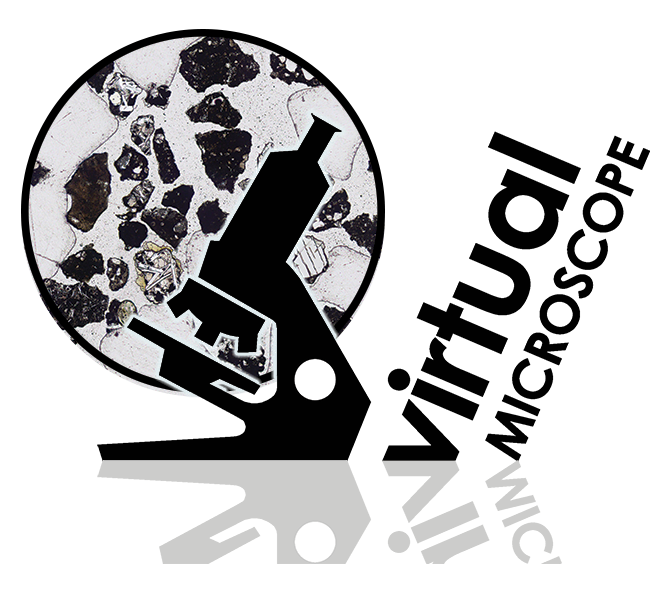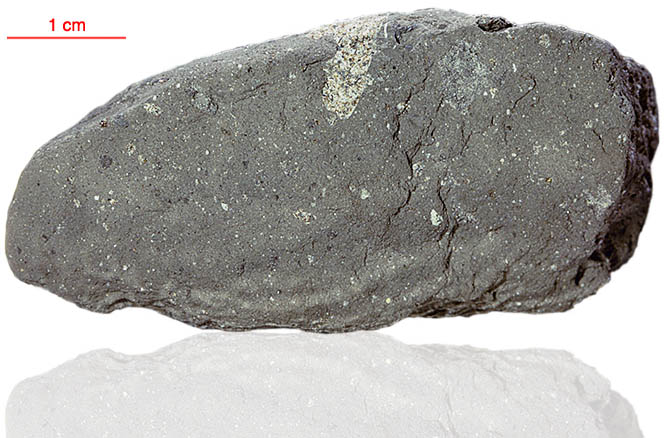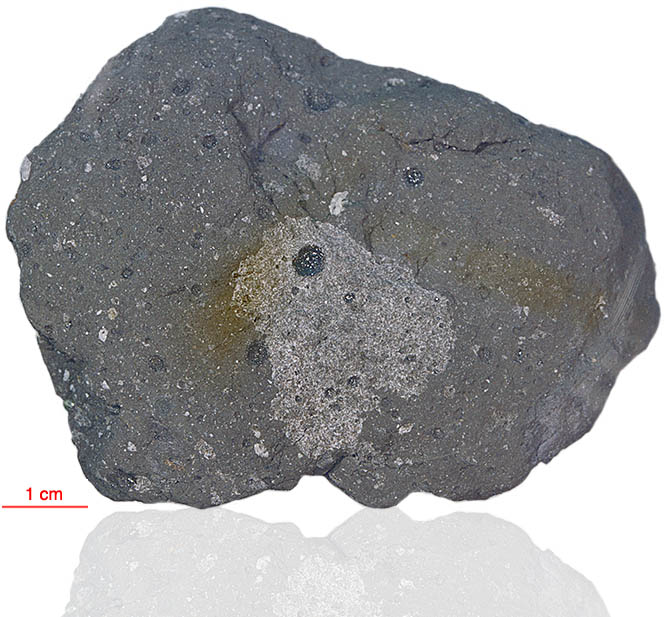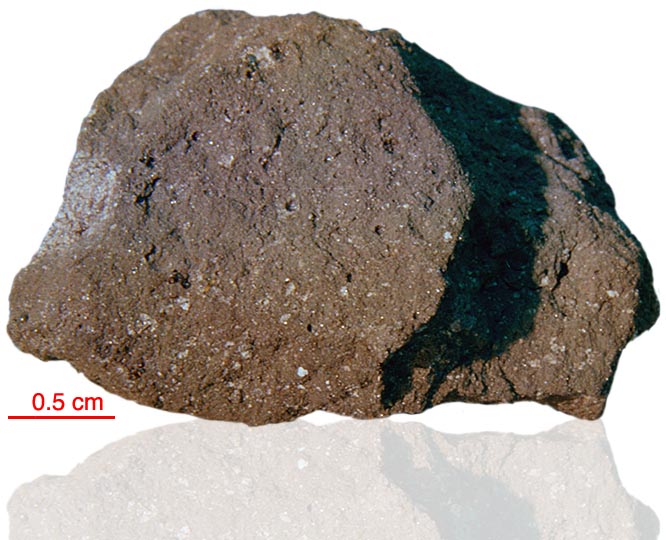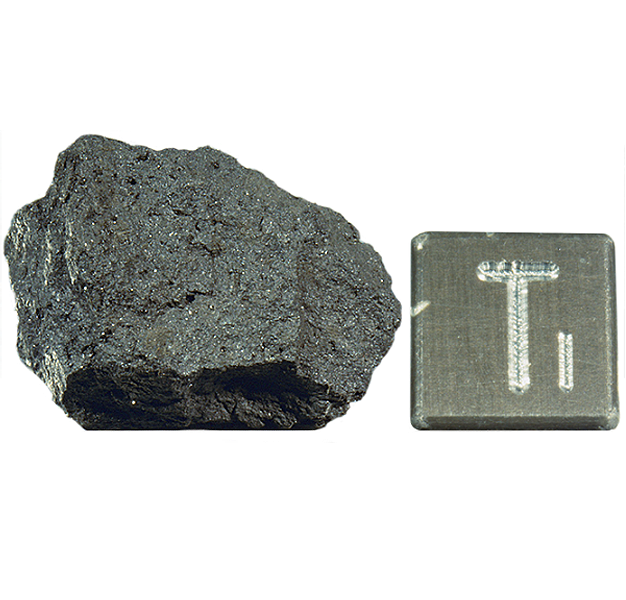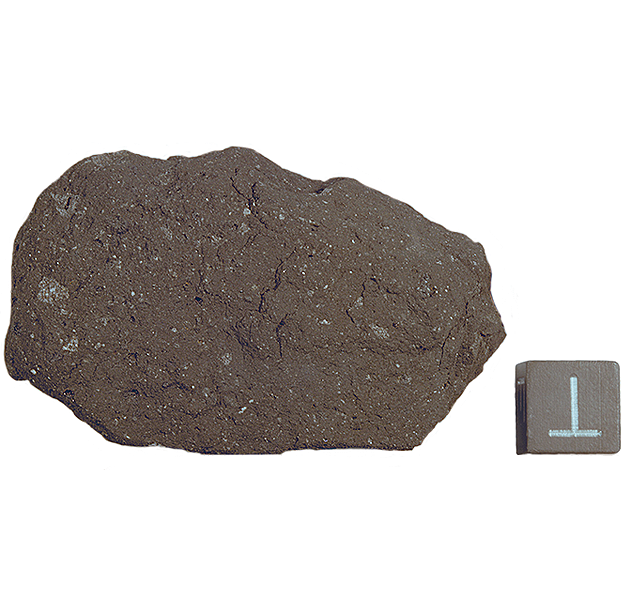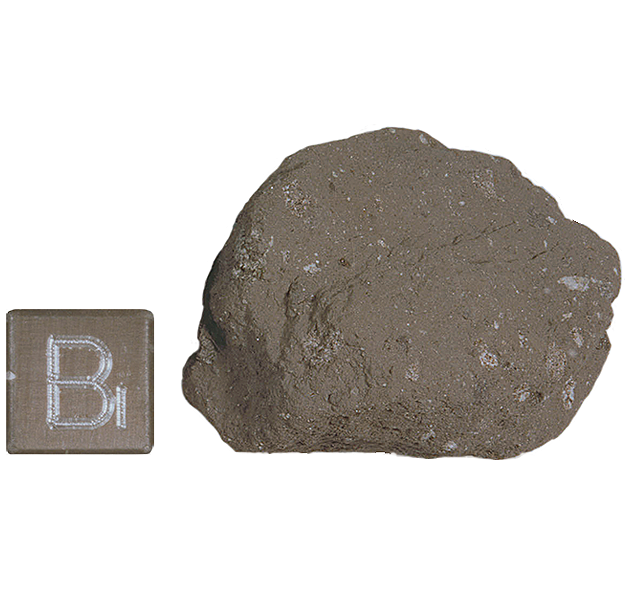
Fact sheet
Sample 10073 is a friable, porous fragmental soil breccia, rather typically of the Apollo 11 landing site. The majority of the rock fragments are basalt, but about 25% are lunar highland material (plagioclase-rich anorthosites). 10073 also contains agglutinates, mineral clasts and glass (the latter forming irregular fragments and rounded spheres) cemented with a fine-grained dark matrix.
Our sample contains one large (5 mm long) fragment of basalt and a few smaller fragments (largest around 1 mm across) of anorthosite. Surrounding the sample are flowery growths (contamination) that have developed since the thin section was prepared.
Further details of this and other Apollo samples are here: http://curator.jsc.nasa.gov/lunar/
The Apollo 11 samples create an iconic collection since they were the first rocks collected by humankind that were returned to Earth from another solar system body. The Apollo 11 team collected and returned 22 kg of rock and soil samples.
Apollo 11 launched from Cape Kennedy on 16 July 1969. An estimated 530 million people watched Armstrong's televised image and heard his voice describe the event as he took "...one small step for a man, one giant leap for mankind" on 20 July 1969.

